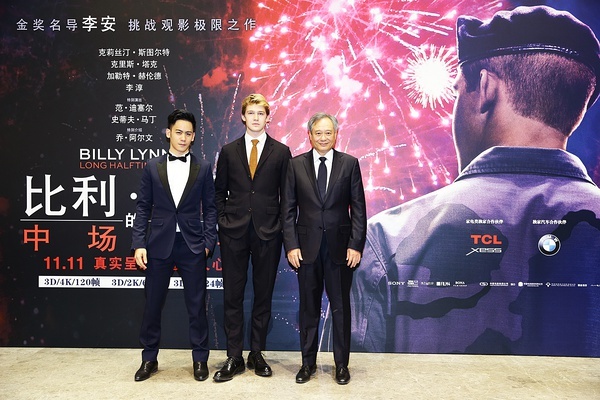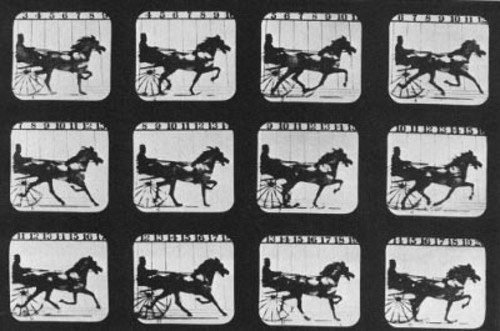120 frames of medical investigation report: serving for clarity but not the only variable

Poster of Ang Lee’s new work
Special feature of 1905 film network The winter is getting stronger, and the double eleven is coming again. About ten years ago, this day was named "Singles Day" by netizens led by college students, and it was a melodramatic carnival for the whole people. A few years ago, Ma Yun turned it into a "shopping festival", which was a carnival for all the people. If 2016 is called the first year of high frame rate movies, then this year’s Double Eleven has reason to become a festival related to "120 frames", because this day was officially released.
Before the arrival of this day, "120 frames" has become the most IN-depth industry hot words in recent times. From the early new york test film to the wide praise of the Beijing test film on November 6, these characters with a strong elite atmosphere have almost become synonymous with the "film technology revolution". Strictly speaking, however, the visual revolution brought by Billy Lynn actually comes from the cooPeration of various parameters, and even the single proposal of "120 Frames" is incorrect, because the unit of frame rate is frame /s, or fps, that is, frames per Second … …

Director Ang Lee, joe alwyn and Mason Lee appeared on the red carpet at the premiere of Billy Lynn’s Long Halftime Walk.
If you are not a technical expert, I believe you can look for the fork that closes the page after reading this. Of course, in line with the people-oriented principle of science and technology, the ultimate goal of all film technology innovations will fall on human perception, otherwise it will lose its meaning. So,What different experiences can the new specifications adopted in Billy Lynn’s Long Halftime Walk bring to mankind?And can the perceptual knowledge of audio-visual experience get rid of vague adjectives and find more convincing proof? We consulted some researchers from the medical point of view, trying to get different answers.
The charm of afterglow: 24 squares of truth is just an illusion.
For a long time, the frame rate of movies was 24fps, which was derived from a method called "persistence of vision"Physiological phenomenon, this phenomenon has a nice name, calledAfterglow effect. According to Dr. Lei, an ophthalmologist,The human body is a living body full of limitations, such as the visual nerve, which requires a certain reaction time: when light shines on the retina, the resulting image will remain in the brain for a period of time, that is to say, after we see a still photo, even if the photo disappears in reality within a specified time, it has not disappeared in the brain.

Film is actually an "illusion" of human beings.
Therefore, if we take a group of photos continuously at a certain speed, and then change this group of photos constantly at this speed, our brain will think that we have seen a "moving picture" instead of a group of still photos. Film is such a set of still photos, in other words, it is actually an "illusion" of human beings.
The research shows that when the frame rate of moving images is at least 15fps, the human eye will feel the image continuity; At 25fps, the human eye will not feel the flicker. In the past, movies used 24fps, because it is the minimum standard that can make people think that the picture is coherent under the premise of saving costs. Because of its widespread use, some people call movies ""24 truthfulness”。 The 120fps movie, even if it is played 5 times slower, can still reach the standard of ordinary movies, and the disproof shows the smoothness of its normal speed.
"In fact, the results of the visual persistence function are different in different studies. Some say it is 50 milliseconds, while others say it is 0.1 to 0.4 seconds. This value is limited by other optimistic conditions, such as lighting conditions." According to Dr. Lei’s explanation, we can’t judge the acceptance effect of human eyes simply from the frame rate. Different environments and different principles of image generation will cause different visual persistence time, so the same frame rate has different impressions in movies, TV and computer games.
Limitation of human eyes: there is little difference between high and high frame rate.
At first, Peter Jackson adopted the format of 4K and 48fps, which was criticized by many people as "unlike movies like TV". This is because the high frame rate was realized earlier in the field of HDTV than movies, and the general frame rate of TV is 30fps (of course, this is the NTSL standard in the United States, which is 29.97fps, and PAL in China is 25fps), and 120 is the least common multiple of 24 and 30, that is to say, if 120fps can be popularized,

New york Daily News once commented that the high frame rate of 48FPS adopted by The Hobbit is as fake as watching a high-definition football game.
So, what is the human eye’s ability to distinguish frame rate? "In fact, our eyes are not as sensitive as we thought. Especially in modern society, there are very few people who can use their eyes healthily. Even the most idealized naked eye may not be able to see through everything. As for the human eye’s recognition limit of frame rate, at least in the medical field, there is no universally applicable conclusion. Even if there is, the experimental environment will be different from that when watching movies, televisions and computer screens. "
Dr. Lei believes that the human eye’s ability to recognize 24fps and 120fps is not ideal from a physiological point of view. However, according to the author’s experience of the 3D/4K/120fps version of Billy Lynn on November 6, the clarity and realism of the picture are indeed very different from those of the previous movies with ordinary formats. Dr. Lei’s point of view is: "I believe that increasing the frame rate can improve the visual experience, but can you guarantee that the two experiences are only frame rate changes? Are other technical conditions exactly the same? "
Yes, the 3D/4K/120fps format is a whole. Billy Lynn has brought unprecedented clarity and realism. The resolution of 4K and the projection brightness of 28fl have also contributed, but they are not like 120fps, and the limelight is covered up. The resolution of 4K makes each frame clearer, and the high brightness of the laser projector is obviously more beneficial for us to see what the picture should look like. If these "optimistic experimental conditions" are removed, 120fps will definitely be greatly reduced.
Side effects worry: rare and severe dizziness should be controlled for viewing time.
Senior video game players all know that there is a disease that bothers them called "FPS vertigo"When it was released, a word named Avatarheadche was born, which refers to the dizziness caused by 3D movies. Including the VR concept of last year’s fire, the vertigo caused by players in the game has not been perfectly solved so far. Then, when 3D movies appear in the format of 4K and 120fps, will this vertigo be aggravated or alleviated? In medicine, this is also a complicated subject. Dr. Lei said: "Some people are very excited to watch 3D, while others feel like vomiting. Everyone has a different reaction. However, this is somewhat beyond the scope of ophthalmology, and it is related to people’s sense of balance and image analysis ability. "

Avatar set off a revolution in 3D technology.
In this regard, Dr. Xu, a doctor of neurology, also said that the vertigo caused by 3D movies is complicated and cannot be generalized. "There are roughly two possibilities. One is that because the picture is very realistic and has a strong sense of movement, people’s visual nerves receive motion information, but in fact, when people are sitting in a chair, the vestibular organ in their ears does not perceive motion, and the brain receives two contradictory messages, it will produce a feeling of dizziness. Its purpose is to remind the body. Dr. Xu said that the dizziness in this situation is similar to the principle of motion sickness and seasickness. "But in fact, this reaction of the brain can be changed through repeated adaptation, and it is usually related to the specific visual information content. At least I personally think that not all pictures will give people this illusion, and it is much weaker than the feeling of motion sickness."
"There is another possibility. In fact, when we watch a 3D movie, we will see the so-called ghost without glasses. This is because the stereoscopic effect of the 3D movie is formed by using the distance between the left and right eyes and the difference in viewing angle, and the brain receives two overlapping image information. Sometimes the pupil distance of the glasses does not match the human eye, the images cannot be accurately overlapped, and the focal length of the human eye will become chaotic. However, the brain’s ability to fuse images is limited and has little to do with the clarity of the picture. " At the screening meeting on November 6th, Mr. Bona emphasized the 3D glasses with a cost of $100. This kind of special glasses, together with the image processing in the early and late stages of the film, can effectively solve the problem of image overlap.
Judging from the media comments of the day, it is rare to see the words "dizziness aggravation". This is also closely related to Ang Lee’s attitude towards 3D. First of all, he didn’t blindly pursue huge parallax like when 3D technology was born, and he flew sharp objects to the screen at every turn. Ang Lee has also said many times that 3D made him fall in love with people’s faces and eyes, and this technology is more suitable for expressing dramatic expression tension rather than big action scenes. Therefore, the film as a whole shows the smoothness and smoothness of the lens. Even if we feel immersive on the show and the battlefield, there is no unacceptable shift in perspective, which also forms the comfort that 3D movies should have.
However, from the point of view of eye hygiene, 3D/4K/120fps format does cause some visual fatigue. Dr. Lei said frankly, "The requirements of human eyes on the environment are still relatively high. Too high and too low brightness and clarity will cause fatigue, and long-term fatigue will also cause diseases. But movies are relatively far less than our mobile phones, computers and televisions. After all, ordinary people can’t keep watching movies in the cinema every day, so there are still people in the medical field who are opposed to the popularity of 3D TV, which is also related to the duration. "